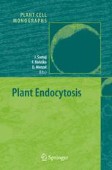Search
Search Results
-
Origin, Development and Structure of Somatic Embryosin Selected Bulbous Ornamentals: BAP as Inducer
Somatic embryogenesis in three important ornamentals is discussed in this chapter. Direct somatic embryo development on the explant tissues...
-
MDR/PGP Auxin Transport Proteins and Endocytic Cycling
Auxin is an essential regulator of plant growth and development. Polarized transport of auxin is responsible for apical dominance, tropic growth,...
-
Somatic Embryogenesis in Genera Medicago: an Overview
This chapter outlines the details of somatic embryogenesis in genera Medicago. Various factors that influence the process of somatic embryo...
-
Somatic Embryogenesis of Pine Species: From Functional Genomics to Plantation Forestry
Several economically important tree species belong to the genus Pinus and many of them form the ecological base of forest ecosystems. Pine wood is...
-
Screening and Analysis of Pollen Tube Mutations
Although the cytology of the cellular aspects of male gametophytic development has been very well described for several species, molecular...
-
Senescence and Cell Cycle Control
In response to various stresses, such as telomere shortening during continuous proliferation, oxidative stress, DNA damage and aberrant oncogene...
-
Chromatin Modifications in DNA Repair
A requirement of nuclear processes that use DNA as a substrate is the manipulation of chromatin in which the DNA is packaged. Chromatin...
-
Quality control of proteins in the mitochondrion
The quality control of proteins within mitochondria is ensured by conserved and ubiquitous ATP-dependent molecular chaperones and proteases, present...
-
The Hsp60 chaperonins from prokaryotes and eukaryotes
The Hsp60 molecular chaperones (the chaperonins) are essential proteins throughout biology. They can be separated into two evolutionary classes: the...
-
Regulation of the heat shock response by heat shock transcription factors
The heat shock response is characterized by a rapid and robust increase in heat shock proteins upon exposure to protein-damaging stresses. This...
-
Template-induced protein misfolding underlying prion diseases
Proteins with prion properties are closely associated to a class of fatal neurodegenerative illnesses in mammals and to the emergence and propagation...
-
Systems Biology: necessary developments and trends
At the end of this definition of Systems Biology through exampling, we discuss ambitions, goals, and challenges relating to this new discipline. We...
-
Higher Harmonic Generation Microscopy
Higher harmonic-generation, including second harmonic generation and third harmonic generation, leaves no energy deposition to the interacted matters...
-
Conserved ribosomal RNA modification and their putative roles in ribosome biogenesis and translation
rRNA maturation requires extensive covalent modifications of riboses and bases. These modifications concern exclusively the most conserved regions of...
-
Biosynthesis and function of tRNA wobble modifications
Post-transcriptional modifications at the first (wobble) position of the tRNA anticodon participate in the precise decoding of the genetic code that...
-
From isolation to integration, a systems biology approach for building the Silicon Cell
In the last decade, the field now commonly referred to as systems biology has developed rapidly. With the sequencing of whole genomes and the...
-
White matter microstructural integrity as a key to effective propagation of gamma entrainment in humans
Gamma entrainment through sensory stimulation has the potential to reduce the pathology of Alzheimer’s disease in mouse models. However, clinical...

-

-

-
ESF1 and MIPEP proteins promote estrogen receptor-positive breast cancer proliferation and are associated with patient prognosis
BackgroundEstrogen receptor-positive (ER+) breast cancer accounts for two-thirds of all breast cancers, and its early and late recurrences still...

